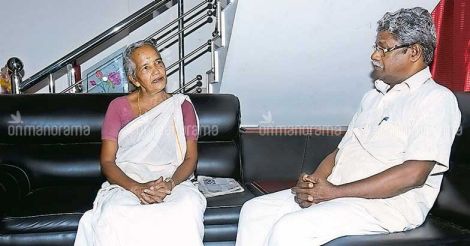“Kempunchu heyeeram?” “Lu amkanj”.
Go on, decipher this. This is no gibberish. Nor is it the made up Kiliki language from the blockbuster, 'Baahubali'. No hacker will ever be able to crack this lingo. Meet the unique coinage called 'Panavally code'.
The code comes from no long-lost tribe or locale. Zip down to Nalpathenneeswaram in Panavally, which happens to be on the border of Alappuzha district and get a taste of the language and a leaf out of a historic past. When Prabhakaran Achary stepped into the verandah of Vijayamma’s house, she asked him: “Kempunchu heyeeram?”, which means, “how are you?” “Lu amkanj”, he replied, which translates to “I’m fine”. Quite intriguing!
This quaint code lingo originated from the small place Nalpathenneeswaram. The code became a major trait of the local parlance for the precise reason that Panavally lay along the extreme borders of Alappuzha. Years ago, the place shared its borders with the princely state of Travancore, when feuds ran rife between the states of Kochi and Travancore.
Hence, places along the borders often got caught in the vortex of the power struggles. It was here that conspiracies were hatched and strategies and counter strategies were planned. The locals soon developed an encryption of their own which evolved into a code to prevent secrets from spilling out to warring foes. They developed it as a war code. For example, they replaced “Aa with a “ka”. So, a “ka took the place of an “Aa”, wherever it was to have been used. "Amma” became “kanna” in the root word.
Thus an encoded script and a vocabulary soon gained popularity and it was passed down to future generations, with the locals faithfully sticking to its virgin version. Curiously enough, only those who lived around the place or were married into these villages got to speak the “classic” language. Thus came code-expert Vijayamma, who was brought to Panavally as M.K.Shanmughan Nair’s young bride. She recalls her bridal days with a tinge of amusement. But there was nothing to feel amused about then, for, everybody spoke the code leaving her perplexed. “Looked like I was in China”, she said. She met the challenge and mastered the code within a week.
Just before he passed away, Shanmughan Nair took the initiative to teach the locals the old code, an exercise which was well accepted. They are now keen on reviving and maintaining the Panavally-copyright code. They believe that by talking in the lingo, the code can be preserved for ever. Quite a lot of them believe that some sort of Government initiative would go a long way in reviving and keeping the code alive as part of a cultural and historic heritage.
As of now, it’s love for the code and the interest of a handful of old-timers that keeps this pre-cyberage encryption alive.
Read more: Society | This Keralite kid learnt to dance before she could walk
Powered by Chuttuvattom. Click here to read in Malayalam

























 There is no hacking this Panavally code. Photo: Onmanorama
There is no hacking this Panavally code. Photo: Onmanorama